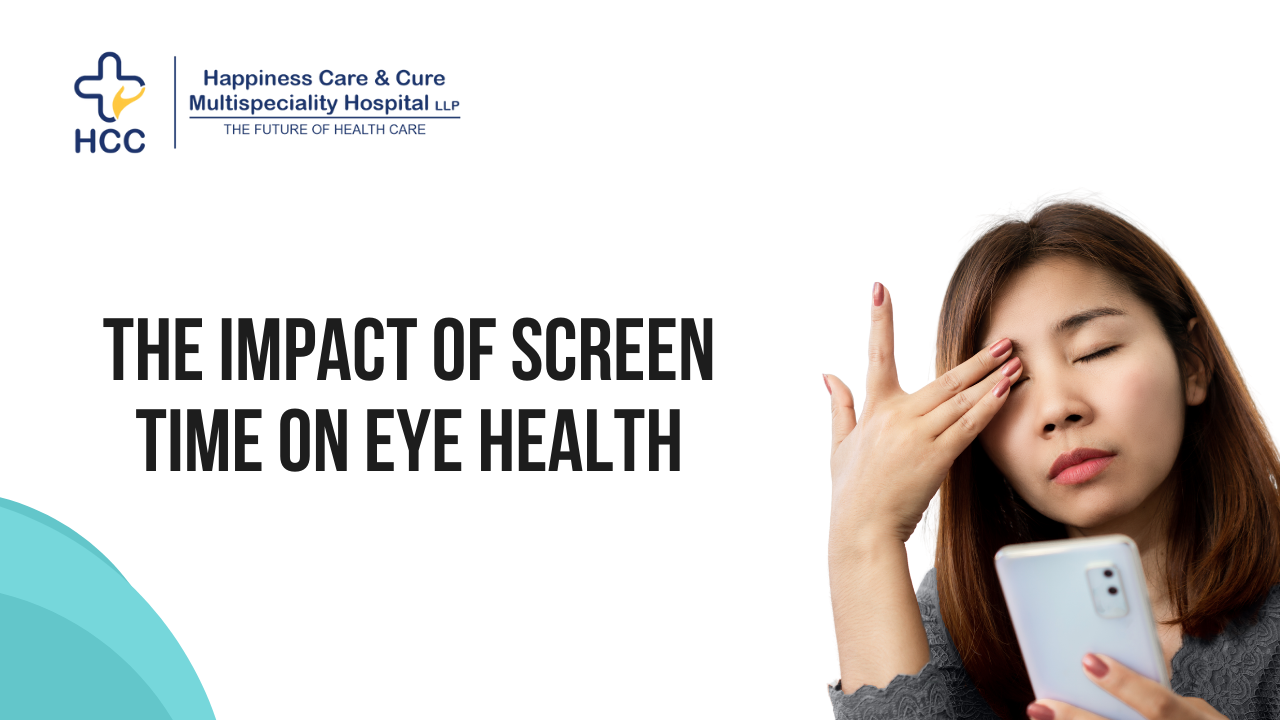
I. Introduction
In today's digital era, our lives are intertwined with screens, from smartphones and computers to tablets and TVs. While these devices offer convenience and connectivity, the prolonged use of screens poses significant challenges to our eye health. This article aims to explore Impact of Screen Time on Eye Health in-depth, shedding light on the effects of extensive screen exposure on our eyes and offering actionable tips for maintaining optimal digital wellness.
II. Understanding Screen Time Effects
A Modern Dilemma
The ubiquity of screens has revolutionized the way we work, communicate, and entertain ourselves. However, the increasing dependency on digital devices has also brought about a modern dilemma: the adverse effects on eye health due to prolonged screen time.
Strain and Fatigue
One of the most immediate and prevalent effects of excessive screen use is eye strain and fatigue. The continuous focus on screens causes our eye muscles to work harder, leading to discomfort, headaches, and blurred vision.
Dry Eyes
Frequent use of screens disrupts our natural blinking patterns, resulting in dry eyes. This condition is characterized by a lack of moisture on the eye's surface, causing itching, redness, and a gritty sensation.
Blue Light Exposure
The prevalence of digital screens exposes us to significant amounts of blue light, which can have detrimental effects on our eyes. Blue light emitted by screens can penetrate the retina, potentially causing damage and disrupting our circadian rhythm, leading to sleep disturbances.
III. Impact on Eye Health
A. Strain and Fatigue Management
1. Implementing the 20-20-20 Rule
The 20-20-20 rule remains a cornerstone in combating eye strain. Taking a 20-second break every 20 minutes to focus on an object at least 20 feet away helps relax eye muscles and reduce strain.
2. Optimal Display Settings
Adjusting screen brightness, contrast, and font size to suit individual comfort levels can significantly alleviate eye strain.
B. Combatting Dry Eyes
1. Blinking Exercises
Conscious efforts to blink more frequently while using screens can prevent dryness and maintain eye moisture.
2. Artificial Tears
Using artificial tear drops or lubricating eye drops can provide relief from dry eyes by supplementing natural tear production.
C. Managing Blue Light Exposure
1. Blue Light Filters
Installing blue light filters or using specialized glasses that block or reduce blue light emission helps minimize its impact on eye health.
2. Night Mode and Screen Time Limitation
Activating night mode and setting screen time limitations on devices during evenings can aid in reducing blue light exposure before bedtime, promoting better sleep quality.
IV. Prioritizing Eye Health
A Holistic Approach
While managing screen time is crucial, holistic eye care involves more than just reducing digital exposure.
Regular Eye Check-ups
Scheduling annual eye examinations with an optometrist ensures early detection of any underlying issues and proper monitoring of eye health.
Balanced Diet and Hydration
Consuming a diet rich in eye-friendly nutrients like omega-3 fatty acids, vitamins C and E, and zinc, along with staying adequately hydrated, contributes to overall eye health.
Rest and Relaxation
Prioritizing adequate rest, proper sleep, and practicing relaxation techniques can significantly benefit eye health by reducing strain and promoting overall well-being.
V. Conclusion
In a digitally driven world, acknowledging the impact of extensive screen time on eye health is imperative. By adopting proactive measures, such as implementing the 20-20-20 rule, managing blue light exposure, and embracing holistic eye care practices, individuals can mitigate the adverse effects and maintain optimal digital wellness.
FAQs
1. Can prolonged screen time cause permanent damage to the eyes?
Prolonged screen time can lead to various eye discomforts and potential long-term issues like myopia progression or digital eye strain syndrome. However, these can be managed with proper care and regular breaks.
2. Is reducing screen time the only solution to alleviate eye strain?
While reducing screen time is beneficial, implementing strategies like the 20-20-20 rule and adjusting display settings can effectively reduce eye strain without entirely eliminating screen use.
3. How can I protect my children's eyes from excessive screen exposure?
Setting screen time limits, encouraging breaks, and ensuring proper lighting and ergonomics during screen use can safeguard children's eye health.
4. Can screen-related eye issues affect people of all ages?
Yes, prolonged screen time can affect individuals of all ages. However, children, due to their developing eyes, and older adults, due to potential age-related changes, might be more susceptible.
5. Are there any exercises to relax eye muscles after extended screen use?
Yes, eye relaxation exercises like palming, eye rotations, and focusing on distant objects can help relax strained eye muscles.
Make an Appoinment